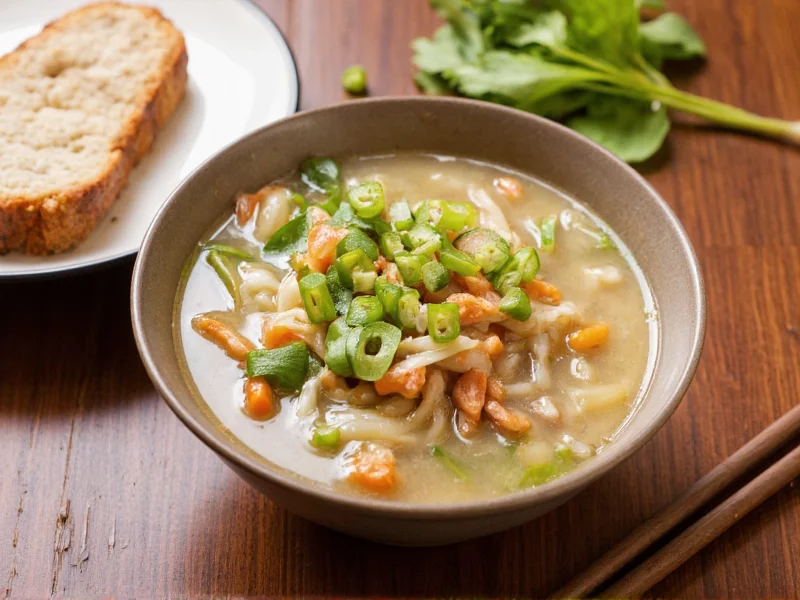Pho (pronounced "fuh") represents Vietnam's culinary soul—a fragrant beef noodle soup that balances complex flavors in perfect harmony. Originating in northern Vietnam during the early 20th century, this beloved dish has evolved into both street food staple and comfort food masterpiece. What separates authentic pho from ordinary noodle soups lies in its meticulously prepared broth, which requires patience and attention to detail but rewards with unparalleled depth of flavor.
Essential Ingredients for Authentic Pho
The magic of pho happens in the broth, but every component matters. Here's what you'll need for traditional beef pho (pho bo), with substitutions for hard-to-find ingredients:
| Category | Essential Ingredients | Substitutions |
|---|---|---|
| Broth Foundation | Beef bones (marrow + knuckle), oxtail, chuck roast | Use all marrow bones if oxtail unavailable |
| Aromatics | Onion (charred), ginger (charred), star anise, cloves, cinnamon stick, cardamom pods | Pre-ground spices work in pinch (use 1/3 amount) |
| Noodles | Banh pho (flat rice noodles), 1/8"-1/4" width | Rice stick noodles (not vermicelli) |
| Meat Toppings | Sliced raw eye of round, brisket, tendon, tripe | Just eye of round if others unavailable |
| Garnishes | Fresh basil, cilantro, sawtooth herb, bean sprouts, lime wedges, sliced chilies | Regular basil + mint if sawtooth unavailable |
Step-by-Step Pho Preparation Guide
Broth Perfection: The Heart of Pho
Creating exceptional pho broth requires careful attention to detail. Start by blanching 4 pounds of beef bones in boiling water for 5 minutes to remove impurities, then rinse thoroughly. Combine bones with 4 quarts cold water in a 12-quart stockpot. Add 2 pounds oxtail and 1 pound chuck roast. Bring to a gentle simmer—never a rolling boil—as boiling clouds the broth.
While broth heats, char one whole yellow onion and a 4-inch piece of ginger over open flame until blackened, then peel and add to pot. Include 5 star anise pods, 3 cloves, one 3-inch cinnamon stick, and 3 cardamom pods tied in cheesecloth. Skim foam aggressively during first 30 minutes, then reduce to occasional skimming. Simmer uncovered for 3-4 hours, partially covered for additional 2-3 hours.
Season broth with 1/4 cup fish sauce and 1 tablespoon sugar when nearly finished. Strain through fine mesh sieve, discarding solids. For crystal-clear broth, avoid stirring during simmering and maintain gentle bubble activity.
Noodle and Assembly Technique
Soak banh pho noodles in cold water for 30 minutes while broth simmers. Blanch in boiling water for 20-30 seconds until pliable but still firm. Drain and divide among serving bowls.
Slice 1/4 pound eye of round paper-thin against the grain. Place raw slices in bowls over noodles. Ladle 2 cups hot broth per bowl—the heat will gently cook the raw beef. Add pre-cooked brisket, tendon, or other meat toppings.
Traditional pho noodle soup presentation includes a side plate of fresh garnishes: Thai basil, cilantro, bean sprouts, lime wedges, sliced jalapeños, and hoisin and sriracha sauces. Never add garnishes directly to the broth—let diners customize their bowls.
Common Pho Mistakes to Avoid
Even experienced cooks make these pho noodle soup preparation errors:
- Boiling instead of simmering—causes cloudy broth; maintain 180-190°F (82-88°C)
- Skipping the blanching step—results in impure-tasting broth
- Overcooking noodles—should be tender but still slightly chewy
- Adding raw meat too early—raw beef should cook in the hot broth
- Using pre-made broth—sacrifices authentic depth of flavor
Pho Variations Worth Trying
While beef pho reigns supreme, these authentic variations offer delicious alternatives:
Pho Ga (Chicken Pho)
Replace beef with 3 pounds chicken bones and 2 whole chicken legs. Use same aromatics but reduce simmering time to 2 hours. Add 1 teaspoon coriander seeds to spice bundle for brighter flavor.
Vegetarian Pho
Create depth with roasted shiitake mushrooms, charred daikon radish, and toasted soybeans. Simmer 8 cups vegetable broth with 2 charred onions, 3-inch charred ginger, and spice bundle for 1 hour. Add 1 tablespoon mushroom soy sauce for umami.
Regional Twists
Northern pho (Hanoi style) features cleaner broth with minimal garnishes. Southern pho (Saigon style) includes more herbs, bean sprouts, and hoisin sauce. Try both to discover your preference.
Serving and Storage Tips
For optimal pho noodle soup experience, serve immediately in pre-warmed bowls. The broth should be piping hot (195°F/90°C) to properly cook raw beef slices. Leftover broth freezes beautifully for up to 3 months—store flat in quart containers for quick thawing. Noodles should be cooked fresh for each serving; never freeze cooked noodles.
When reheating, bring broth to gentle simmer but avoid boiling. Add fresh herbs and garnishes after reheating to maintain vibrant flavors and textures. Properly stored components allow you to enjoy homemade pho noodle soup throughout the week with minimal daily preparation.











 浙公网安备
33010002000092号
浙公网安备
33010002000092号 浙B2-20120091-4
浙B2-20120091-4